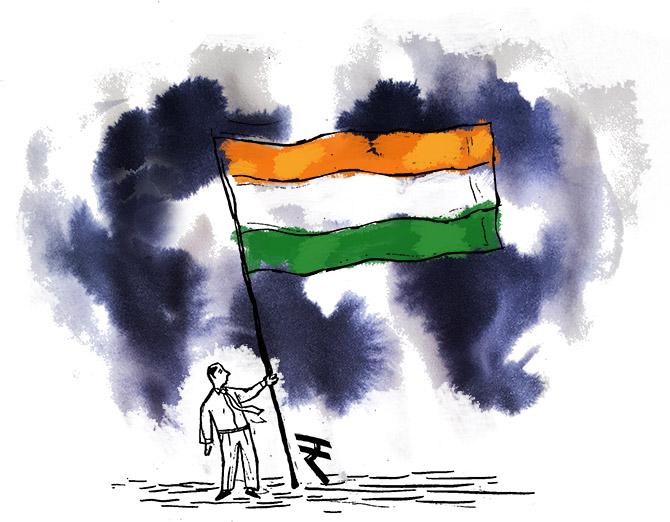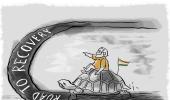Even as both India and the world struggle to re-build after COVID-19, they face slow-burn problems that could develop into full-blown crises, observes T N Ninan.

In 2014, India's economy finally began growing faster than China's, and stayed ahead for the next three years.
In 2018 the forecast was that the ranking would stay unchanged till 2020.
As things turned out, China soon pulled ahead, and then the gap grew.
This year its economy will see growth of an anticipated 2 per cent, while India experiences a sharp recession.
Adjusting for relative changes in the rupee's and yuan's dollar values, the International Monetary Fund now says China's economy grew by 146 per cent in the 2010-20 decade while India managed barely a third of that: 52 per cent.
Yet the Indian story wasn't bad at all, since its growth outpaced every trillion dollar economy other than China.
Of the 13 other countries in that club, as many as seven saw their economies shrink in the course of the decade.
America's growth rate in 2010-2020, at 39 per cent, was among the best of the rest.
So India, despite misadventures, a slowdown and now a recession, has actually had a pretty good decade if one judges by plain economic growth.
On the other hand, it is worth bearing in mind that some of the smaller economies have done much better.
Bangladesh grew faster than China during the decade, while Vietnam nearly matched it.
What of the future? It was probably Marx who said that economies in capitalism see incremental growth punctuated by periodic crises.
The reality just now is that, even as both India and the world struggle to re-build after the pandemic, they face slow-burn problems that could develop into full-blown crises.
No one can foresee which volcano will erupt if inequality continues to grow as it has even nine years after the 'Occupy Wall Street' campaign of protest by the '99 per cent'.
Marx's other prediction, of a crisis of under-consumption, begins to look plausible as workers get a smaller share of the pie, with fewer people working than before, at poorer salary levels in the midst of more uncertainty than before, while the top 1 per cent has it good.
Could democracy provide answers? We should consider Donald J Trump, supported as someone said by those with an excess of wealth and an excess of anger.
Nor can anyone foresee when climate change, which so far has not seriously intruded on the calculations of economic growth, will force itself on economists' mindsets about what constitutes 'growth'.
The US president-elect, Joe Biden, has made inequality and climate change part of his core agenda.
It is time India did too.
That should translate into a long-delayed inclusion of 'nature's capital' in depreciation calculations -- and affect the economics of (among other things) mining activity and paddy-growing by the protesting farmers of Punjab and Haryana.
In turn, rising inequalities may prompt more welfarism, perhaps even a minimum income guarantee that could become a fiscal trap from which escape becomes impossible.
Both issues point to the need for a re-assessment of the approach to macro-economic policy, though it remains true that without growth as traditionally defined all other goals will be more difficult to attain.
Finally, there is the evolving power dynamic in Asia.
China's economy is now 5.7 times India's, compared to 3.5 times in 2010.
It seems a matter of time before it becomes bigger than America's.
A richer China's increasing expenditure on research and development, measured in dollars using purchasing power parity, is now close to that by the US.
India spends a fraction of that, a smaller proportion in relation to its own GDP, and with less to show for the money spent.
The results are evident in the growing Chinese challenge to the US on frontier technologies.
As for military power, China is about to launch its third aircraft carrier and plans six in all, two of them reportedly designated for the Indian Ocean where India will probably deploy a brace of much smaller carriers.
It is hard to tell whether intensifying and broadening power rivalries will result in military conflict, as has happened with previous power-shifts, or simply the Finlandisation of much of Asia.
Ten years from now, the world could look a very different place.
Feature Presentation: Aslam Hunani/Rediff.com











